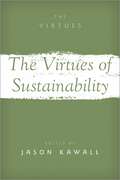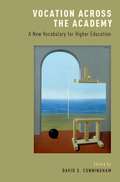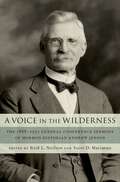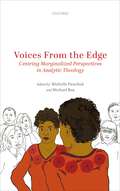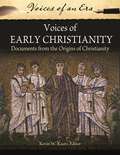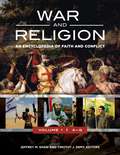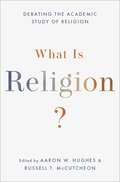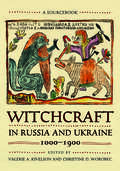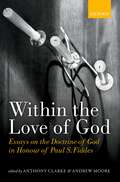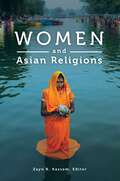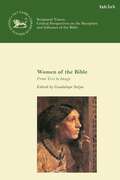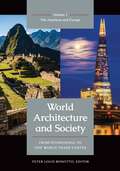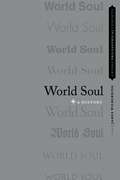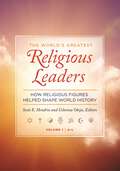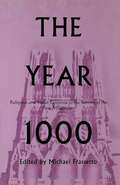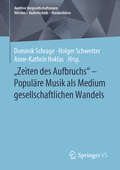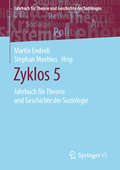- Table View
- List View
The Virtues of Sustainability (The Virtues)
From climate change to species extinction, and habitat loss to soil degradation, a stark awareness of the often devastating impacts of human actions is growing. People around the world are urgently seeking sustainable ways of life for themselves and their communities. But what do these calls for a sustainable future mean for our current values and ways of life, and what kind of people will we need to become? Though sustainability is a ubiquitous concept with a range of meaning and applications, this volume shows that it can be significantly understood and sought through the notion of virtue, in the tradition of virtue ethics. Approaches to ethical living that emphasize good character and virtue are resurgent, and especially well-suited to addressing our present challenges. From rethinking excessive consumption, to appropriately respecting nature, to finding resilience in the face of environmental injustice, our characters will be frequently tested. The virtues of sustainability--character traits enabling us to lead sustainable, flourishing lives--will be critical to our success. This volume, divided into three sections, brings together newly-commissioned essays by leading scholars from multiple disciplines--from philosophy and political science, to religious studies and psychology. The essays in the first section focus on key factors and structures that support the cultivation of the virtues of sustainability, while those in the second focus in particular on virtues embraced by non-Western communities and cultures, and the worldviews that underlie them. Finally, the essays in the third section each address further particular virtues of sustainability, including cooperativeness, patience, conscientiousness, creativity, and open-mindedness. Together, these essays provide readers with a rich understanding of the importance and diversity of the virtues of sustainability, and practical guidance towards their cultivation.
The Visions, Revelations and Teachings of Angela of Foligno: A Member of the Third Order of St Francis
Angela of Foligno was born in about 1248, twenty-two years after the death of Francis of Assisi, the saint on whom she was to model her life. With sudden deaths in her family, she felt called to follow a more religious and devout life, forsaking everything. In the years that followed she lived a life of total commitment to God. Her teachings and visions, and her deep spiritual wisdom, became internationally recognized as coming from a blessed person. This book provides the reader with a selection of Angela's visions and teachings drawn from The Divine Consolations of Angela of Foligno.
Vocation across the Academy: A New Vocabulary for Higher Education
Although the language of vocation was born in a religious context, the contributors in this volume demonstrate that it has now taken root within the broad framework of higher education and has become intertwined with a wide range of concerns. This volume makes a compelling case for vocational reflection and discernment in undergraduate education today, arguing that it will encourage faculty and students alike to venture out of their narrow disciplinary specializations and to reflect on larger questions of meaning and purpose. In conversation with a growing range of scholarly resources, these essays advance the cause of vocational reflection and discernment well beyond its occasional mention in general education courses and career placement offices. The book's thirteen contributors all work in higher education, but they do so as biologists and musicians, sociologists and engineers, doctors and lawyers, college presidents and deans, and scholars of history, literature, and business administration. Together, they demonstrate that vocation has an important role to play across the entire range of traditional academic disciplines and applied fields. Regardless of major, all undergraduates need to consider their current and future responsibilities, determine the stories they will live by, and discover resources for addressing the tensions that will inevitably arise among their multiple callings. Vocation across the Academy will help to reframe current debates about the purpose of higher education. It underscores the important role that colleges and universities can play in encouraging students to reflect more deeply on life's most persistent questions and to consider how they might best contribute to the common good.
A Voice in the Wilderness: The 1888-1930 General Conference Sermons of Mormon Historian Andrew Jenson
In April 1888, Andrew Jenson, Danish immigrant and convert to the Mormon faith, received an unexpected invitation from church leaders to speak at their general conference. Jenson was an outsider to this conference tradition, a layman whose only standing before the main body of Latter-day Saints came from a contracted position with the Church Historian's Office. Forty-two years later, in April 1930, Jenson offered his twenty-eighth and final general conference sermon. He had become the voice of institutional record keeping in his over forty-year career as an Assistant Church Historian. His sermons demonstrated the growth and expansion of the Mormon general conference tradition in the twentieth century, as they placed the Latter-day Saint story front and center for church members to learn from and celebrate. In addition, Jenson urged conference goers to keep better personal and institutional records and believed he was often the solitary advocate for church record keeping and historical preservation. A Voice in the Wilderness presents all twenty-eight of Andrew Jenson's general conference sermons, with introductions and annotations that set them within their historical and religious contexts. His speeches capture a unique period in Mormon history, one of institutional change, accommodation, and growth. This study of Jenson's sermons uncovers the richness and diversity that thrives just beneath the surface of official ecclesiastical discourse.
Voices from the Edge: Centring Marginalized Perspectives in Analytic Theology (Oxford Studies in Analytic Theology)
Over the past several decades, scholars working in biblical, theological, and religious studies have increasingly attended to the substantive ways that our experiences and understanding of God and God's relation to the world are structured by our experiences and concepts of race, gender, disability, and sexuality. These personal and social identities and their intersections serve as a hermeneutical lens for our interpretations of God, self, the other, and our religious texts and traditions. However, they have not received nearly the same level of attention from analytic theologians and philosophers of religion, and so a wide range of important issues remain ripe for analytic treatment. The papers in this volume address the various ways in which the aforementioned social identities intersect with, shape, and might be shaped by the questions with which analytic theology and philosophy of religion have typically been concerned, as well as what new questions they suggest to the discipline. We focus on three central areas of analytic theology: methodological principles, the intersection of social identities with religious epistemology, and the connections among eschatology, ante-mortem suffering, and ante-mortem social perceptions of bodies.
Voices of Early Christianity: Documents from the Origins of Christianity (Voices of an Era)
This fascinating resource examines the day-to-day lives of early Christians—as depicted through documented accounts of the period—from the beginning of Christianity through 325 CE.Early Christianity drew its doctrine from a variety of sources—personal interpretation, Hebrew scriptures, and church council—yet the core ideology endured, even as the religion transitioned from being the object of persecution to becoming a legal institution in the Roman Empire. This book celebrates the voices that helped create and develop Christianity during that period.Voices of Early Christianity: Documents from the Origins of Christianity is a collection of excerpts from significant documents from early Christian history, organized topically, then listed chronologically within each section. The author compares textual variations among the works of the apostles, as well as key themes over time, and frames the discussion for further critical thinking. Topics include sexuality, marriage, and divorce; food issues; women in early Christianity; and politics and Christianity.
Wahhabism and the World: Understanding Saudi Arabia's Global Influence on Islam (Religion and Global Politics)
For more than half a century, Saudi Arabia--through both official and non-governmental channels--has poured billions of dollars into funding and sponsoring religious activities and Islamic causes around the world. The effect has been to propagate Wahhabism, the distinctively rigid and austere form of Islam associated with the Kingdom's religious establishment, within Muslim communities on almost every continent. This volume features essays by leading scholars who explore the origins and evolution of Saudi religious transnationalism, assess ongoing debates about the impact of these influences in various regions and localities around the world, and discuss possible future trends in light of new Saudi leadership. In addition to chapters devoted to the major actors and institutions involved in Saudi global religious propagation, the volume contains a wide range of country case studies that offer in-depth analysis of the nature and impact of Saudi religious influence in nations across multiple world regions.
War and Religion [3 volumes]: An Encyclopedia of Faith and Conflict [3 volumes]
This three-volume reference provides a complete guide for readers investigating the crucial interplay between war and religion from ancient times until today, enabling a deeper understanding of the role of religious wars across cultures.Containing some 500 entries covering the interaction between war and religion from ancient times, the three-volume War and Religion: An Encyclopedia of Faith and Conflict provides students with an invaluable reference source for examining two of the most important phenomena impacting society today. This all-inclusive reference work will serve readers researching specific religious traditions, historical eras, wars, battles, or influential individuals across all time periods.The A–Z entries document ancient events and movements such as the First Crusade that began at the end of the 10th century as well as modern-day developments like ISIS and Al Qaeda. Subtopics throughout the encyclopedia include religious and military leaders or other key people, ideas, and weapons, and comprehensive examinations of each of the major religious traditions' views on war and violence are presented. The work also includes dozens of primary source documents—each introduced by a headnote—that enable readers to go directly to the source of information and better grasp its historical significance. The in-depth content of this set benefits high school and college students as well as scholars and general readers.
Welfare and Religion in 21st Century Europe: Volume 2: Gendered, Religious and Social Change
Historically, European churches have played a large part in the provision of welfare. Responsibility, however, has gradually shifted to the state - a shift that forms an integral part of the process of secularization and one that has been readily accepted by European populations. But what happens when the state itself begins to recede - a process that is occurring in most, if not all, European societies for a wide variety of reasons? The implications for welfare are considerable, not least for the role of the churches which begin to resume the responsibilities previously shed but in new and different ways. This book looks at the connections between religion and welfare in Europe, exploring in detail eight European societies - Finland, Norway, Sweden, England, Germany, France, Italy and Greece. The different theological traditions, different church-state relationships and different welfare regimes are all examined. The analysis is based on first hand empirical research which considers not only the changing situation on the ground, but attitudes towards this within a range of different constituencies - the churches, local government and the general public. Particular attention is paid to the significance of gender in both the process of change and in attitudes towards this. Welfare and Religion in 21st Century Europe: Volume 1 represents comparative research at its best and highlights key policy implications for the future. A companion book, Welfare and Religion in 21st Century Europe: Volume 2 explores thematically the changing nature of religion and welfare and the new relationships that are emerging between the religious and the secular, and between church and state in the 21st century.
What is Constructive Theology?: Histories, Methodologies, and Perspectives (Rethinking Theologies: Constructing Alternatives in History and Doctrine)
This essential introduction to contemporary constructive theology charts the most important disciplinary trends of the moment. It gives a historical overview of the field and discusses key hermeneutical and methodological concerns. The contributors apply a constructive perspective to a wide range of approaches, ranging from biblical hermeneutics and postcolonial studies to comparative, political, and black theology.What is Constructive Theology? shows how diverse and interdisciplinary constructive theology can be by exploring key themes in the field. The contributors explore the porous boundaries between Christianity and other religions, reflect on contextual, liberation and constructive theologies from Africa and from Black British perspectives, explore the connection between embodiment, epistemology and hermeneutics, and take a constructive approach to the dangerous memories and theologies of colonial histories in Belgium and Native Americans in the United States. This sampler of the field will help you rethink theologies and find constructive alternatives.
What Is Religion?: Debating the Academic Study of Religion
Controversies over how to define the word "religion" have persisted for decades. It is a term of art and of academic study, but also one of governance, technologies, and of networks; it is a concept whose diversity is often its own worst enemy. "Religion" is as much a fuzzy set of conceptualizations and generalizations about a range of human activities as it is an authorizing system of persons, ideas, and practices. What is Religion?: Debating the Academic Study of Religion invites readers to eavesdrop on scholarly debates over the limits of, and uses for, a word commonly used but infrequently defined in a precise manner. This volume takes the temperature of the modern field of Religious Studies by inviting a diverse group of scholars to offer their own substantive contribution that builds on the shared opening prompt, "Religion is...". Their essays document the current state of the field and its various sub-fields, assess the progress that has been made over the past generation, and propose new directions for future work. Seventeen of the international field's leading scholars show how they work with each other's definition, or, sometimes, the lack of a definition. Of interest to students, scholars, and general readers alike, What is Religion? will provoke debate and provide insights into the state of the field.
Witchcraft in Russia and Ukraine, 1000–1900: A Sourcebook (NIU Series in Slavic, East European, and Eurasian Studies)
This sourcebook provides the first systematic overview of witchcraft laws and trials in Russia and Ukraine from medieval times to the late nineteenth century. Witchcraft in Russia and Ukraine, 1000–1900 weaves scholarly commentary with never-before-published primary source materials translated from Polish, Russian, and Ukrainian. These sources include the earliest references to witchcraft and sorcery, secular and religious laws regarding witchcraft and possession, full trial transcripts, and a wealth of magical spells. The documents present a rich panorama of daily life and reveal the extraordinary power of magical words.Editors Valerie A. Kivelson and Christine D. Worobec present new analyses of the workings and evolution of legal systems, the interplay and tensions between church and state, and the prosaic concerns of the women and men involved in witchcraft proceedings. The extended documentary commentaries also explore the shifting boundaries and fraught political relations between Russia and Ukraine.
Within the Love of God: Essays on the Doctrine of God in Honour of Paul S. Fiddes
The doctrine of God is central to theology for it determines the way in which other regions of Christian doctrine are articulated, yet work on this topic in its own right has been occluded recently by treatments of the Trinity or divine passibility. This collection of specially commissioned essays presents major treatments of key themes in the doctrine of God, motivated by but not restricted to the work of Professor Paul S. Fiddes to whom it is offered as a Festschrift. It includes invigorating discussions of the biblical and non-biblical sources for the doctrine of God, and the section on 'Metaphysics and the Doctrine of God' examines some of the most important conceptual questions arising in contemporary theological debate about the being and nature of God, and God's relations to the world. The final section of the book on 'God and Humanity' will be highly relevant to scholars working in the fields of theological anthropology, moral and political theology, on inter-faith relations, on theology and literature, or who are interested in the impact of contemporary science on the doctrine of God. The introduction relates the essays in the book to the work of Professor Fiddes and to wider debates in Christian doctrine. This volume brings together a team of internationally distinguished scholars from a wide range of theological, philosophical, and religious perspectives, and it will stimulate fresh thinking and new debate about this most central of topics in Christian theology.
Women and Asian Religions (Women and Religion in the World)
Covering eclectic topics ranging from South Asian religion to motherhood to world dance to ethnomusicology, this book focuses on contemporary selected experiences of women and how their lives interface with religion.Religion has often been perceived as the source of constriction for women's roles in society. This volume explores how modern women across Asia are mobilizing their faith traditions to address existential issues encountered in both the public and private realms, relating to economics, public participation, politics, and culture. As such, it is revealed that religion can be a powerful force for social change and ameliorating women's lives, despite use of religious doctrine in the past to limit women. Editor Zayn R. Kassam, PhD, and the contributors cover not only the commonly considered "Asian" traditions of Hinduism, Islam, and Buddhism but also Christianity, Judaism, Bahai, and indigenous traditions. The book reveals that the challenges and opportunities Asian women face arise both from within and outside, whether in terms of developments within their countries or in relation to international political and economic regimes. The chapters explore how the issues Asian women face have as much to do with cultural and religious codes as they do with politics, economics, education, and the law; consider the varying ways in which family and motherhood are affected by the state's construction of the gendered citizen, by social constructs of motherhood, and by policies regarding women and children's access to health care; and identify the roles played by religion and spirituality in these circumstances.
Women of the Bible: From Text to Image (The Library of Hebrew Bible/Old Testament Studies)
The Hebrew Bible and art reside at the core of this book, which analyzes the iconographic representation of several women of the Bible. The contributors consider the ways in which the biblical texts regarding these women had been read and understood throughout time and the means by which they were represented. Each study also explores the different values associated with these representations according to the problems, worries and concerns of each period. Drawing upon disciplines such as theology, philology or history of art, the essays within this volume provide a cross-sectional, plural and rich approach. In focusing upon iconographic representation, numerous visual cultures of the last millennium are explored, and special emphasis is placed upon several integral biblical women such as Bathsheba, Moses' mother, the Pharaoh's Daughter, Ruth, Naomi and Deborah, and their lasting influence upon Western art and culture. This book pursues an understanding of the history of the transmission and reception of the Bible in general, and of the women of the Old Testament in particular.
World Architecture and Society [2 volumes]: From Stonehenge to One World Trade Center [2 volumes]
This two-volume encyclopedia covers buildings and sites of global significance from prehistoric times to the present day, providing students with an essential understanding of architectural development and its impact on human societies.This two-volume encyclopedia provides an in-depth look at buildings and sites of global significance throughout history. The volumes are separated into four regional sections: 1) the Americas, 2) Europe, 3) Africa and the Middle East, and 4) Asia and the Pacific. Four regional essays investigate the broader stylistic and historical contexts that describe the development of architecture through time and across the globe. Entries explore the unique importance of buildings and sites, including the megalithic wonder of Stonehenge and the imposing complex of Angkor Wat.Entries on Spanish colonial missions in the Americas and the medieval Islamic universities of the Sahara connect to broader building traditions. Other entries highlight remarkable stories of architectural achievement and memory, like those of Tuskegee University, a site hand-built by former slaves, or the Hiroshima Peace Memorial Park, which was built at the site of the atomic detonation. Each entry focuses on the architectural but includes strong consideration of the social impact, importance, and significance each structure has had in the past and in the present.
The world of Genesis (Large Print)
This image shows a map of the ancient Middle East. There is a locator dot shown, which will be at the top left when the image is the correct way up. The map is surrounded by an image border. The Mediterranean Sea is in the top left quarter of the page. Part of the Caspian Sea is in the top right of the page. Part of the Persian Gulf is towards the bottom right of the page. The Red Sea is in bottom centre of the page. The land is not textured. As it is today, southern Greece is in the top left of the page and north east Africa in the bottom left quarter of the page. Modern day Israel would be in the centre of the image. The rivers Euphrates and Tigris are shown as wiggly lines running from the top centre of the page, diagonally down and right, to the Persian Gulf. The river Nile runs up the page as a wiggly line from the bottom of the page just left from the Red Sea. There is a north arrow in the top left corner and a scale in the bottom left corner.
The world of Genesis (UEB Uncontracted)
This image shows a map of the ancient Middle East. There is a locator dot shown, which will be at the top left when the image is the correct way up. The map is surrounded by an image border. The Mediterranean Sea is in the top left quarter of the page. Part of the Caspian Sea is in the top right of the page. Part of the Persian Gulf is towards the bottom right of the page. The Red Sea is in bottom centre of the page. The land is not textured. As it is today, southern Greece is in the top left of the page and north east Africa in the bottom left quarter of the page. Modern day Israel would be in the centre of the image. The rivers Euphrates and Tigris are shown as wiggly lines running from the top centre of the page, diagonally down and right, to the Persian Gulf. The river Nile runs up the page as a wiggly line from the bottom of the page just left from the Red Sea. There is a north arrow in the top left corner and a scale in the bottom left corner.
World Religions for Healthcare Professionals
This third edition of a popular text introduces healthcare students and professionals to a wide range of health beliefs and practices in world religions. Chapters on various religions are written to offer an insider’s view on the religion’s historical development, key beliefs and practices, including ideas of health, sickness, death, and dying. The chapters include case studies, advice on what to do and what to avoid when caring for patients. Introductory chapters invite the reader to consider the broad context of patient care in pluralistic society and explore one’s personal orientation to others from different religions. How we care for patients from different backgrounds and cultures insists on professional boundaries that the reader may have not yet examined. A new chapter explores the relationship between religion and public health in light of the COVID-19 pandemic, asking the reader to consider what morally appropriate balance is required if and when personal faith conflict with public health needs. Undoubtedly, the sensitivity with which clinicians communicate with patients and make decisions regarding appropriate medical intervention can be greatly increased by an understanding of religious and cultural diversity. This is a core textbook for students studying healthcare, religion and culture, and an invaluable reference for healthcare professionals.
World Soul: A History (Oxford Philosophical Concepts)
Many philosophers and scientists over the course of history have held that the world is alive. It has a soul, which governs it and binds it together. This suggestion, once so wide-spread, may strike many of us today as strange and antiquated--in fact, there are few other concepts that, on their face, so capture the sheer distance between us and our philosophical inheritance. But the idea of a world soul has held so strong a grip upon philosophers' imaginations for over 2,000 years, that it continues to underpin and even structure how we conceive of time and space. The concept of the world soul is difficult to understand in large part because over the course of history it has been invoked to very different ends and within the frameworks of very different ontologies and philosophical systems, with varying concepts of the world soul emerging as a result. This volume brings together eleven chapters by leading philosophers in their respective fields that collectively explore the various ways in which this concept has been understood and employed, covering the following philosophical areas: Platonism, Stoicism, Medieval, Indian or Vedântic, Kabbalah, Renaissance, Early Modern, German Romanticism, German Idealism, American Transcendentalism, and contemporary quantum mechanics and panpsychism theories. In addition, short reflections illuminate the impact the concept of the world soul has had on a small selection of areas outside of philosophy, such as harmony, the biological concept of spontaneous generation, Henry Purcell, psychoanalysis, and Gaia theories.
The World's Greatest Religious Leaders [2 volumes]: How Religious Figures Helped Shape World History [2 volumes]
This book provides reliable information about important world religious leaders, correcting the misinformation that can be on the internet.Religious leaders have shaped the course of history and deeply affected the lives of many individuals. This book offers alphabetically arranged profiles of roughly 160 religious leaders from around the world and across time, carefully chosen for their impact and importance and to maximize inclusiveness of faiths from around the world. Scholars from around the world, each one an expert in his or her field and all holding advanced degrees, came together to create an essential resource for students and for those with an interest in religion and its history. Every entry has been carefully edited in a two-stage review process, guaranteeing accuracy and readability throughout the work. Not strictly a biographical reference that recounts the facts of religious figures' lives, the book helps users understand how the selected figures changed history. The entries are accompanied by excerpts of primary source documents and suggestions for further reading, while the book closes with a bibliography of essential print and electronic resources for further research.
The Year 1000: Religious and Social Response to the Turning of the First Millennium
This collection of new essays examines the long-standing question of apocalyptic expectations around the turn of the first millennium. Including works by scholars of medieval history, literature, and religion, this book argues that apocalyptic expectations did exist around the year 1000. It provides a more balanced and nuanced approach to the issue than the traditional views that either identify a time of fear, the 'terrors of the year 1000', or deny that awareness of the millennium existed. This book, instead, recognizes that there were a variety of responses to the eschatological years 1000 and 1033 and that these responses contributed to the broader social and religious developments associated with the birth of European civilization.
"Zeiten des Aufbruchs" - Populäre Musik als Medium gesellschaftlichen Wandels (Auditive Vergesellschaftungen Hörsinn - Audiotechnik - Musikerleben)
Dieser Band fragt nach dem Beitrag der populären Musik zu den gesellschaftlichen Transformationen der 1960er bis 1980er Jahre und verbindet kultursoziologische, musik- und kulturwissenschaftliche Perspektiven. Welchen neuartigen Erlebensweisen, welchen sozialen Akteursgruppen verschafft Musik Geltung? Viele zeitgenössische Akteure, aber auch akademische Arbeiten deuten das Auftreten neuer Musikstile (Beat, Rock, Punk etc.) auf der Bühne der Geschichte als Bestandteil eines befürworteten gesellschaftlichen „Aufbruchs“ (jeweils neuer Generationskohorten). Der Band beobachtet diese Metapher des Aufbruchs indes als eine feldtypische Deutung, anhand derer das Zusammenwirken von Musik und gesellschaftlichen Transformationen bereits kenntlich wird.
Zyklos 5: Jahrbuch für Theorie und Geschichte der Soziologie (Jahrbuch für Theorie und Geschichte der Soziologie)
Das Jahrbuch für Theorie und Geschichte der Soziologie trägt dem Umstand Rechnung, dass die Soziologie eine Wissenschaft ist, die es mit einem sich historisch wandelnden Gegenstand zu tun hat, also eine Wissenschaft ist, die sich stets von Neuem selbst reflektieren muss, und widmet sich der engen Verbindung von soziologischer Theorie- und Disziplingeschichte sowie allgemein der Reflexionsgeschichte der Gesellschaft und ihren verschiedenen Selbstbeschreibungen. Neben Aufsätzen zur Theorie und Geschichte der Soziologie enthalten die einzelnen Bände dieses Jahrbuches auch Nachrichten aus der soziologiegeschichtlichen Forschung, Inedita aus den verschiedenen einschlägigen Archiven, Interviews mit Zeitzeugen sowie Besprechungen einschlägiger Buchpublikationen zu diesem Thema. Der Inhalt Editorial • Aufsätze • Diskussion • Nachrichten aus der soziologiegeschichtlichen Forschung • Editionsprojekte • Unveröffentlichtes aus den Archiven • Rezensionen • Anhang Die Zielgruppe SoziologInnen Die Herausgeber Dr. Martin Endreß ist Professor für Allgemeine Soziologie an der Universität Trier. Dr. Stephan Moebius ist Professor für Soziologische Theorie und Ideengeschichte an der Karl-Franzens-Universität Graz.
